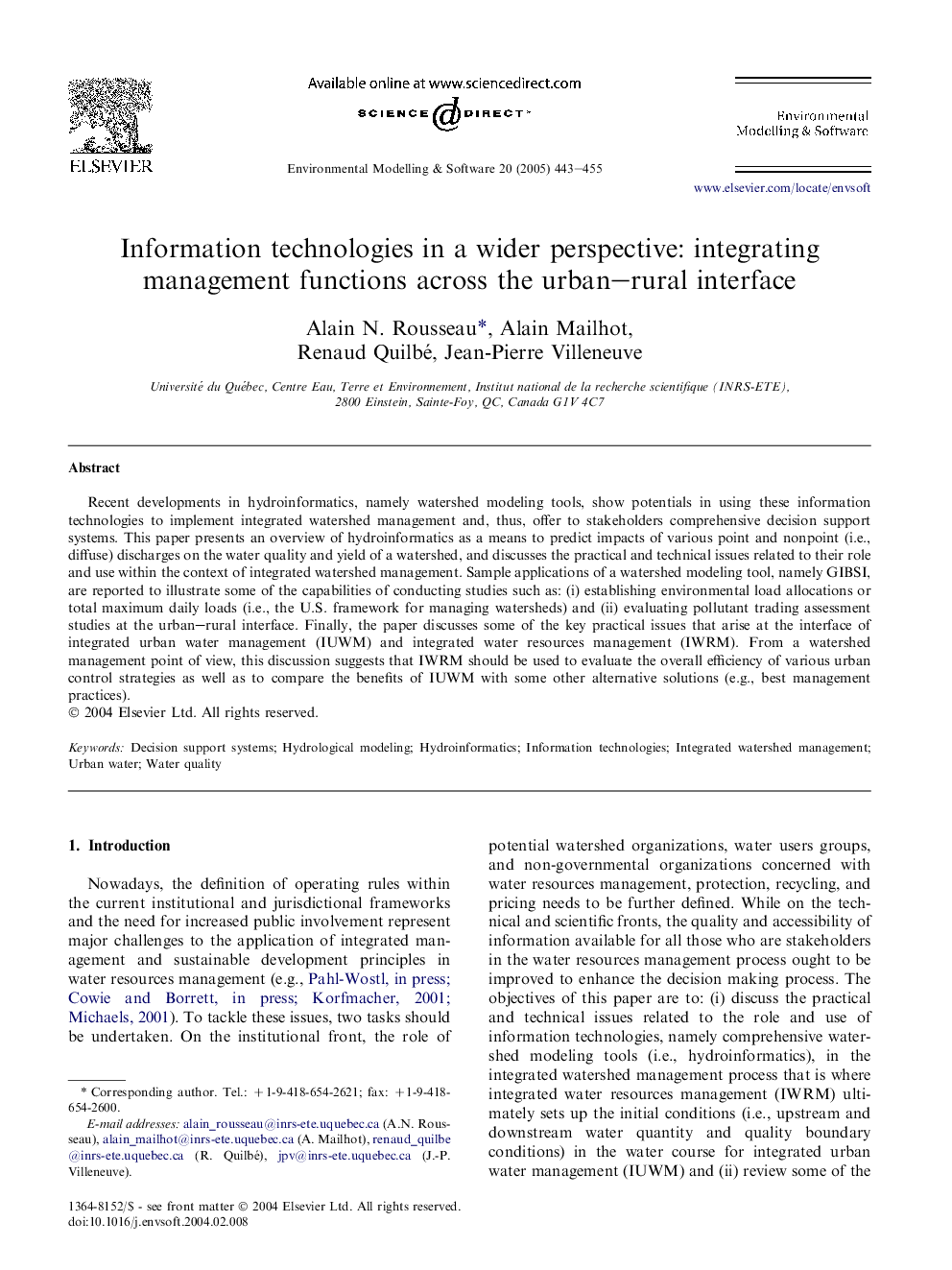| Article ID | Journal | Published Year | Pages | File Type |
|---|---|---|---|---|
| 10371236 | Environmental Modelling & Software | 2005 | 13 Pages |
Abstract
Recent developments in hydroinformatics, namely watershed modeling tools, show potentials in using these information technologies to implement integrated watershed management and, thus, offer to stakeholders comprehensive decision support systems. This paper presents an overview of hydroinformatics as a means to predict impacts of various point and nonpoint (i.e., diffuse) discharges on the water quality and yield of a watershed, and discusses the practical and technical issues related to their role and use within the context of integrated watershed management. Sample applications of a watershed modeling tool, namely GIBSI, are reported to illustrate some of the capabilities of conducting studies such as: (i) establishing environmental load allocations or total maximum daily loads (i.e., the U.S. framework for managing watersheds) and (ii) evaluating pollutant trading assessment studies at the urban-rural interface. Finally, the paper discusses some of the key practical issues that arise at the interface of integrated urban water management (IUWM) and integrated water resources management (IWRM). From a watershed management point of view, this discussion suggests that IWRM should be used to evaluate the overall efficiency of various urban control strategies as well as to compare the benefits of IUWM with some other alternative solutions (e.g., best management practices).
Keywords
Related Topics
Physical Sciences and Engineering
Computer Science
Software
Authors
Alain N. Rousseau, Alain Mailhot, Renaud Quilbé, Jean-Pierre Villeneuve,
